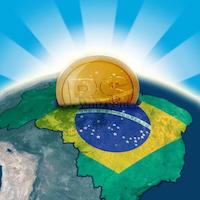The Brazilian GDP (Gross Domestic Product) fell by 1.9% in the second quarter of 2015 compared to the first quarter of 2015, according to IBGE (Brazilian Institute of Geography and Statistics) announced on Friday (28). On an year-over-year basis, the decline was 2.6%. The GDP in the 1st half of 2015 decreased by 2.1% compared to the same period 2014, following the negative growth of 0.4% in the six months ended in December 2014.
Analysts estimated a decline of 1.7% in the second quarter 2015 compared to the first quarter, taking into account the average of Bloomberg survey estimates. In the annual comparison basis, it was expected a drop of 2.1%.
Accumulated in the four quarters ending in the second quarter of 2015, GDP decreased by 1.2% compared to the immediately previous four quarters, also the number recorded in the accumulated result of the year until the month of June was 2.1% over the same period of 2014. In absolute number, GDP in the second quarter of 2015 reached R$ 1.43 trillion (Aprox. US$ 400 billion).
In the quarterly contraction, agriculture had contraction of 2.7%, while the industry fell by 4.3% and services showed 0.7% contraction. In industry, the largest decrease occurred in construction: a decrease of 8.4%. The manufacturing industry, with (-3.7%) and electricity activities and gas, water, sewage and urban cleaning (-1.5%) also fell in the second quarter. On the other hand, mining registered a positive variation of 0.3%.
In services; administration, health and public education (1.9%) and real estate activities (0.3%) showed positive results. The other activities suffered retraction compared to the previous quarter: trade (-3.3%), transport, storage and postal services (-2.0%), information services (-1.3%), other services (-1,0%) and financial intermediation and insurance (-0.2%).
From the perspective of expenditure, gross fixed capital formation recorded the eighth consecutive quarter of decline in this comparison: 8.1%. The households’ consumption expenditure (-2.1%) fell for the second straight quarter. However the government consumption expenditure grew by 0.7% compared to the previous quarter. In regards to the external sector, exports of goods and services increased by 3.4%, while imports of goods and services fell 8.8% in the first quarter 2015.
All components of domestic demand fell, comparing the second quarter of 2015 against the same period in 2014. The households’ consumption expenditure (-2.7%) registered the second consecutive decrease. This result can be explained by the deterioration in the inflation indicators, interest rates, credit, employment and income over the period.
The gross fixed capital formation suffered contraction of 11.9% in the second quarter of 2015, the highest since the first quarter of 1996 (-12.7%). This decline is explained mainly by the fall in imports and domestic production of capital goods, and also by the negative performance in construction, says the IBGE. The government consumption expenditure, in turn, fell 1.1% in the second quarter of 2014. In the external sector, exports of goods and services expanded by 7.5%, while imports of goods and services fell by 11.7%, both influenced by the currency devaluation of 38% in the period.
The investment rate in the second quarter 2015 was 17.8% of GDP, lower than in the same period last year (19.5%). The savings rate was 14.4% in the second quarter of 2015 (compared to 16.0% in the same period of 2014).

Leave a Reply